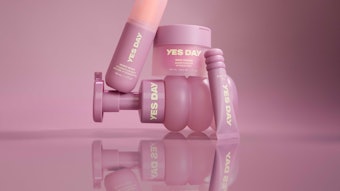
Sensitive skin care is now mainstream, driving a market projected to exceed $68B by 2029. Here, we explore how biomimetic, barrier-boosting ingredients are reshaping the category with expert insights from Core Biogenesis, Lucas Meyer Cosmetics by Clariant and Nagase Viita.
This article is only available to registered users.
Log In to View the Full Article
Sensitive skin care is now mainstream, driving a market projected to exceed $68B by 2029. Here, we explore how biomimetic, barrier-boosting ingredients are reshaping the category with expert insights from Core Biogenesis, Lucas Meyer Cosmetics by Clariant and Nagase Viita.
Once considered niche, sensitive and compromised skin care has emerged as a powerful market driver. The global market for sensitive skin care products was valued at US $44.36 billion in 2024 and is projected to reach $68.12 billion by 2029, growing at a CAGR of 9.1%, according to The Business Research Company.1
Other reports forecast even higher growth; Grand View Research, for instance, projects the market will climb from $41.12 billion in 2022 to $80.97 billion by 2030.2 This acceleration reflects growing consumer demand for products that are both effective and gentle — delivering visible results without compromising skin integrity.
Key contributors to this trend include increased awareness of skin barrier health, consumer fatigue with the over-use of irritating actives like retinol and acids, and more. These factors have heightened sensitivity across demographics, prompting a shift toward formulations designed to support, rather than challenge, the skin. At the same time, consumers are no longer satisfied with simple soothing; they now seek multifunctional solutions that repair, hydrate and protect — while still addressing underlying issues.
This shift has opened the door for biomimetic technologies, barrier-strengthening peptides and natural actives with proven performance. Here, industry experts from Core Biogenesis, Lucas Meyer Cosmetics by Clariant and Nagase Viita share how their innovations are addressing these evolving consumer expectations.
Biomimetic Benefits While Protecting the Barrier
Tony Abboud, chief commercial officer at Core Biogenesis, sees sensitive skin care as having made it mainstream. “Compromised and sensitive skin is no longer a niche concern – it’s now a mainstream demand,” he writes. “This is driven by rising awareness of skin barrier health, overuse of irritating actives like retinol and acids, and external aggressors including pollution and reactive oxygen species.”
According to Abboud, consumers are looking for high-performance products that respect skin integrity while still delivering results. As a result, he adds this has shifted the market “toward biomimetic, barrier-supportive ingredients.”
Looking ahead, Abboud expects continued growth in ‘active calm’ space — i.e., “formulations that deliver visible results while soothing sensitivity and improving the skin barrier,” he explains. “There's strong potential in combining efficacy with tolerance, particularly for aging skin prone to both inflammation and compromised barrier function. The future lies in preventive regeneration: ingredients that activate repair without triggering irritation.”
He continues, “at Core Biogenesis, we see tremendous potential in next-generation growth factors designed to deliver skin longevity benefits while reducing trans-epidermal water loss.” He points to the company’s Peauforia ingredient (INCI: Water (Aqua) (and) Glycerin (and) Xanthan Gum (and) Camelina Sativa Oleosomes/Camelina Sativa sr-(Arabidopsis Thaliana Polypeptide-2 sh-Polypeptide-1) (and) Gluconolactone) that combines a biomimetic, human-identical FGF-2 growth factor with natural lipid carrier oleosomes that is produced in Camelina sativa.
“This fusion has been clinically proven to reduce TEWL by 16% in just 14 days, while also significantly decreasing melanin in areas of hyperpigmentation,” Abboud notes. “When combined with a complimentary active based on EGF, this complex outperformed 0.3% retinol in skin smoothness at both 14 and 30 days — delivering faster, more comfortable results with no irritation.”
Multifunctional Innovation and Skin Comfort Plus Resilience
“Sensitive skin care is shifting toward a holistic approach,” observes Amandine Werle, marketing specialist at Lucas Meyer Cosmetics by Clariant. “Beyond soothing, it needs to include barrier repair, inflammation modulation and hydration. Indeed, sensitive skin is prone to itching, which will cause barrier disruption and water loss, impacting the skin’s capacity to recover.”
She adds that consumers now seek trusted, proven ingredients with dual benefits: comfort and long-term skin resilience. “Peptides and well-established natural actives are key in meeting this demand,” she writes.
Moving forward, Werle underscores the importance of innovation in multifunctionality for sensitive skin care. “Consumers are streamlining their routines, particularly those with sensitive skin who are cautious about overloading their skin with multiple formulations,” she explains. “There’s a growing demand for intelligent, all-in-one solutions that can simultaneously soothe, repair, hydrate and protect.”
She also highlights how this trend “opens strong potential for next-generation formulations that combine complementary mechanisms, such as strengthening the barrier while modulating inflammation and delivering hydration, all in a single product.”
Enabling these market directions, per Werle, natural and biomimetic actives will lead the way. “For instance, [Lucas Meyer Cosmetics by Clariant’s] Melicica ingredient (INCI: Glycerin (and) Water (Aqua) (and) Honey Extract), derived from Jellybush honey, … leverages honey’s well-known wound-healing properties to accelerate skin repair and support barrier recovery.”
In addition, she points to biomimetic peptides as another powerful technology. “Corneopeptyl (INCI: Glycerin (and) Water (Aqua) (and) Hexapeptide-9) mimics the LCE6A activity to reinforce the corneocyte envelope and strenghten the skin.”
Lastly, Tazman Pepper C (INCI: Glycerin (and) Water (Aqua) (and) Tasmannia Lanceolata Leaf Extract) is a botanical active reportedly known for its rapid action on skin redness and discomfort, with visible results on erythema reduction within just one hour of application. “By combining these technologies, brands can deliver solutions that meet the evolving expectations of sensitive skin users: fast-acting, trustworthy and multifunctional,” Werle concludes.
Dermocosmetics and Targeting Underlying Mechanisms
Yui Sunada, R&D marketing manager of Nagase Viita Co., Ltd., first reflects on the definition of sensitive skin and its increased prevalence in recent years. “’Sensitive skin’ is a self-perceived condition triggered by external factors that wouldn’t normally affect healthy skin,” she writes. “A compromised skin barrier increases the permeability of irritants through the stratum corneum – a key factor in skin sensitivity.3
She notes the term sensitive skin gained prominence during the COVID-19 pandemic due to increased hygiene practices like mask-wearing, frequent handwashing and sanitizer use, which disrupted the skin barrier. “These habits persist, fueling demand for products free-from harsh actives and irritants,” she explains. “However, without standardized evaluation methods, the definition of potential irritants remains unclear.”
Per Sunada, as awareness grows, minimalist formulations and natural or nature-derived ingredients — viewed as gentler — are increasingly preferred, reflecting a broader shift toward skin-friendly care.
“As mentioned, products formulated to minimize irritation are widely adopted. However, a growing number of consumers are seeking solutions that target the mechanisms underlying sensitive skin and compromised skin barrier,” she adds. “This trend is driven by the increased interest in dermocosmetics that aim to improve skin function. Consequently, demand is expected to rise for products that enhance barrier function and provide effective moisturization.”
Finally, according to Sunada, answering this market demand is trehalose, a naturally occurring saccharide found in everyday foods like mushrooms. “It possesses excellent moisture-retention capacity, protecting cells and biological functions in desert plants that survive extreme dryness,” she explains.
“It is scientifically proven to support skin barrier health by retaining moisture in keratin and promoting lamellar structure formation, as well as to reduce dryness-induced itching. Trehalose was first industrialized by Nagase Viita, under the product name Trehalose 100, using sustainable enzyme technology with microorganisms.”
Conclusions
As sensitive skin care continues to evolve, the focus is shifting from simple soothing to smart, science-backed solutions that deliver results without irritation. With biomimetic actives and multifunctional technologies leading the way, it appears the future lies in prevention, repair and resilience.
References
1. The Business Research Company. (2025, Jan). Sensitive skin care products global market report 2025 – By product (face care, body care, lip care), by gender (male, female), by distribution channel (supermarkets and hypermarkets, specialty stores, pharmacy and drugstores, online, other distribution channels) – Market size, trends and global forecast 2025-2034. Available at https://www.thebusinessresearchcompany.com/report/sensitive-skin-care-products-global-market-report?utm_source=chatgpt.com
2. Grand View Research. (Accessed 2025, Jul 22). Sensitive skin care products market size, share and trends analysis report by product (face care, body care, lip care), by gender (male, female), by distribution channel, by region and segment forecasts, 2023 – 2030. Available at https://www.grandviewresearch.com/industry-analysis/sensitive-skin-care-products-market-report
3. Misery, L., Loser, K. and Ständer, S. (2016, Feb). Sensitive skin. J Eur Acad Dermatol Venereol, 30, 2-8; available at https://pubmed.ncbi.nlm.nih.gov/26805416/












